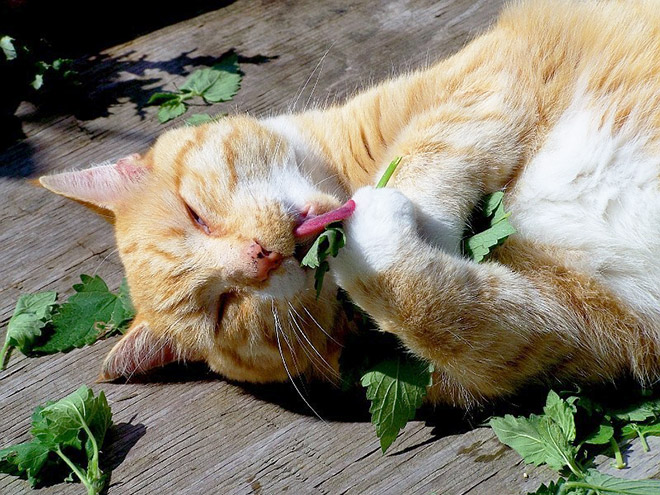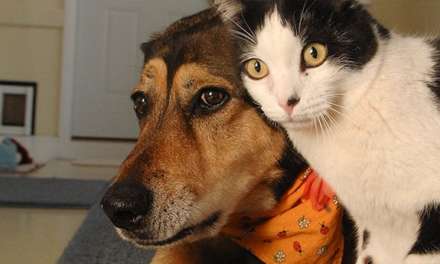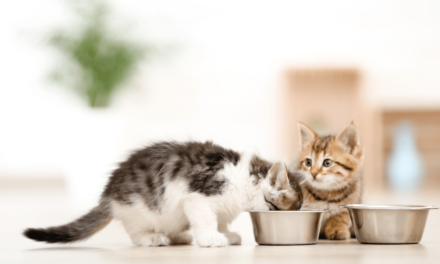It’s to most people’s knowledge that cats are crazy over catnip! Some cats seem to get high on it – rolling around ecstatically, purring, drooling. Others go into a kind of trance, as if they’re contemplating the secrets of the universe. Some go completely bonkers, rushing around madly from room to room! As a cat owner, you might be wondering, is catnip really safe? Should I feed my kitten catnip? What happens if my cat eat a lot of catnip? So in this article, we will have all these questions answered!
What is catnip?
Catnipis a member of the mint family, known as Nepeta cataria. Originally a wild herb that originated in North Africa, it’s now common throughout gardens in Europe, North America, Australia and other parts of the world.
While there are over 250 different varieties in this mint family, the four most common catnip types are:
- True catnip (nepeta cataria): this variety grows up to 3 feet high and has flowering spikes with white flowers.
- Persian catmint (nepeta mussinii): with purple flower spikes and small grey-green leaves, this variety grows up to 15 inches.
- Lemon catnip (nepeta cataria citriodora): with a lemony scent, this variety also grows up to 3 feet high and has white flowers spotted with purple.
- Camphor catnip (nepeta camphorata): growing up to 18 inches and with a camphor scent, this plant has white flowers with purple dots.
How does catnip affect your cat?
Catnip is a feline hallucinogen, so your pussin really is getting high when they indulge in it. But don’t worry, they’re not likely to fall in with a bad crowd and start making poor life choices. The effects wear off very quickly.
So how does it work? When the leaves of the catnip plant are crushed, they give off a strongly-scented minty oil. The oil contains an active ingredient called nepetalactone. Cats are highly sensitive to this intoxicating ingredient, and they can detect one part in a billion. Even lions, tigers and other big cats love it!
Nepetalactoneis a natural mood enhancer, and it produces feel-good chemicals known as pheromones in your cat. When your cat smells it, they might react in different ways.
- Some cats get super-smoochy and affectionate: rolling around in the catnip, rubbing their face all over it, licking and sniffing it, purring or drooling
- Others get a burst of energy – they might zoom around from room to room for a few minutes, ears back and pupils wide.
- A smaller proportion of cats will get very relaxed and enter a trance-like state, staring off into space and thinking about deep questions. Where does the red dot come from? And why can’t I ever catch it?
The effects usually don’t last more than 15 minutes, and after this your cat will be immune to any more catnip for a few hours at least.
It’s said that the effects on cats are similar to the effects that LSD or other hallucinogens have on people, although I’d like to know exactly how the scientists came to this conclusion. Did they test catnip on people – or LSD on cats?
Do all cats react to catnip?
It’s in the code. A catnip response is an inherited genetic marker, and not all cats have it. My cat family is a perfect statistical distribution of this marker:
- About a third react strongly, like my cat Fatpuss, who would eat, breathe and sleep in catnip if he could.
- Another third have fun, but can take it or leave it, like my cat Grimth.
- And the last third don’t react at all – like my cat Podae, who can’t see what all the fuss is about and thinks the other two are very silly when they’re under the influence.
Kittens are immune to the effects of catnip until they’re about six months old, and some senior cats seem to lose interest in it as they age.
How should you give catnip to your cat?
You can find a huge array of catnip-enriched products online – pre-scented toys, scratching posts, bedding, sprays and other options. You can also buy dried catnip: make sure you keep this in an airtight container in the fridge, so that it keeps its potency. Fresh catnip is a great way to go. You can plant it in the garden or grow it in a pot, either on the balcony or the windowsill, or inside your home. I have it growing in the garden, and I often go out to find Fatpuss sleeping in the shade of this lush bush.
Growing catnip is easy – you can buy seeds or grow kits over the internet, or purchase a seedling from your local nursery. The plant needs room to grow, and well-drained soil with lots of sun. Keep it watered while it’s establishing itself, and once it’s mature it’s basically set-and-forget.
The big question: is catnip good for your cat?
The short answer is YES. Catnip is good for your cat. It’s safe and completely non-toxic. There is an important exception to this rule, and that’s for pregnant cats. Catnip is a known uterine stimulant, so if your queen is pregnant, make sure she can’t get to any catnip at all, whether fresh or dried.
For the rest of the feline population, catnip is fun, enjoyable and harmless. Most importantly, they can’t get addicted, and they won’t even get a hangover.
Your cat also can’t overdose on this mild stimulant. Even if they are as greedy as Fatpuss, and they eat a huge amount of it, it will probably only cause a mild tummy upset or induce some vomiting. Most cats won’t ever get to this point, as they know when they’ve had enough and will refuse any more.
Some cat owners don’t like the idea of giving their pet something that can drastically alter their behavior, or feel that it’s unfair or exploitative to do so. This is obviously a matter of personal choice. For many cat owners, they are happy to see their cats experience the euphoria of this wonderful treat. Catnip can enrich the experience and environment of your cat, especially when it’s hidden inside a toy – and especially if your cat is indoor-only.
So you can happily treat your cat to catnip every now and again – and enjoy watching the effect it has on your lovely pet!





